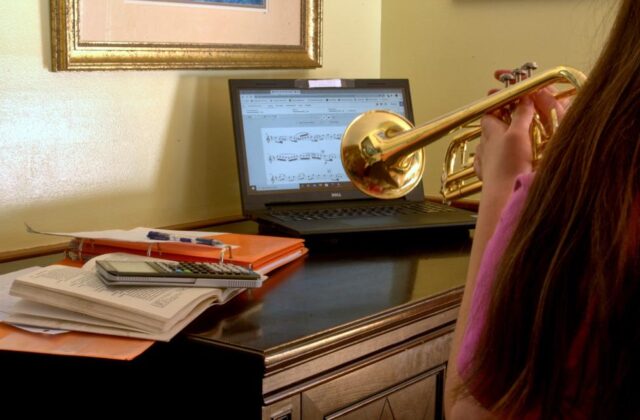Regional 7 Students and Teachers Adapt to Online Learning
It’s not perfect, but they’re making it work
By Charlotte McDevitt
Photo by Doug McDevitt
To say that now is a difficult time for students would certainly be an understatement. With all the schools in Connecticut closed and without a definitive reopening date, students and teachers are feeling the stress. Thankfully, students at Northwestern Regional 7 are still able to learn, albeit a bit more slowly due to the occasional technical problem. But how does online learning work exactly?
Each teacher can choose a different learning platform to assign work, but the most commonly used is Google Classroom. On this website, teachers can attach worksheets and photos for the students, who in turn submit their completed work on the site. Students can add private comments on their work that only the teacher can see, or they can share something for the whole class with the class comments feature.
Online learning encompasses all the classes that students have during a normal school day, including band and gym. For gym, students are expected to fill out a fitness log. Each fitness log requires students to set a goal in minutes for how long they want to exercise in four categories: cardio, endurance, flexibility, and strength. At the end of the week, they fill out their minutes to see if they met their weekly goal. The next week, students answer questions about how their workout went, and find out if there is anything they should change.
Online band is impossible, but thanks to a clever software called Smartmusic, there’s an alternative. When students log in, they can see pieces of music assigned to them, and once they start playing, the accompaniment plays in the background. If the students play notes and rhythms correctly, the notes show up green, and if they play incorrectly, the notes are red. Students can replay the piece as many times as they want, but they aren’t expected to achieve a perfect score. A score of 80 percent or higher is acceptable, since there is a possibility of technical problems.
Describing her experience so far, one teacher at Northwestern said, “Online learning has made me feel like a first-year teacher all over again.” However, she has noticed some problems that have arisen with the new way of teaching. “There are more students to track down who have not handed in work. I have to think of different ways of accomplishing what is most important in my curriculum. I have been told to scale back but still make it meaningful. An essay that could be written in a week may now take five weeks, one week for each paragraph so that it is easier for students to manage and so that they do not become overwhelmed now that they have an unstructured day.”
However, it’s not all bad. Stephen Zimmerman, the high school band director at Northwestern Regional, is taking it in stride. “Nothing is easier, but there are some positives. I love having my dog with me at work each day. I like the ability to walk outside and hike each day. My schedule is more flexible, and I have no commute. As a music teacher with lots of night and weekend activities, I also get to see my family a lot more.” Mr. Zimmerman is appreciative of the effort students have been putting in, but he misses the social interaction. “Band is a social and collaborative class. There’s no laughter when something goes off the rails. There are no stories that make the music personal. There’re no concerts or parades on the calendar, and students don’t get to be with their friends in rehearsal each day.”
It may be difficult for students and teachers alike, but this situation won’t last forever. Kids will be able to see their friends again, and teachers will be able to teach in person. But for now, online learning is the new normal.

